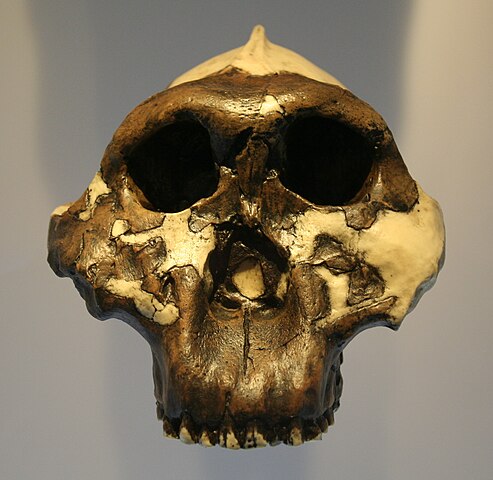The discovery of Paranthropus robustus has played a significant role in shaping our understanding of early hominin evolution. Here’s an exploration of the fossil evidence and the discovery of Paranthropus robustus:
Discovery:
- Location: Fossils of Paranthropus robustus have been found in several sites in South Africa, including Swartkrans, Kromdraai, and Drimolen.

- Time Period: The species lived during the Pliocene and Pleistocene epochs, approximately 2 to 1.2 million years ago.
Fossil Finds:
- Type Specimen (SK 48 – Swartkrans): The holotype specimen of Paranthropus robustus is SK 48, a cranium discovered at Swartkrans. This specimen, along with others, contributes to our understanding of the species.
- Other Significant Specimens: Fossils of Paranthropus robustus include crania, mandibles, teeth, and postcranial elements. Notable specimens include SK 46 and SK 847 from Swartkrans and DNH 7 from Drimolen.
Morphological Features:
- Skull Morphology: Paranthropus robustus is characterized by a robust skull with a prominent sagittal crest—a ridge of bone on the top of the skull. The crest served as an attachment point for powerful jaw muscles.
- Dental Characteristics: The species had large molars and premolars, suggesting adaptations for processing tough, fibrous plant materials. The teeth exhibit thick enamel, which is resistant to wear.
- Facial Morphology: Paranthropus robustus had a prognathic face, meaning the face projected forward. The robust facial features and strong jaw muscles were adaptations for chewing and grinding tough vegetation.
Dietary Inferences:
- Vegetarian Diet: The dental and cranial adaptations of Paranthropus robustus suggest a diet that consisted largely of tough plant foods. The robust skull and jaws were well-suited for chewing and processing fibrous vegetation.
- Craniodental Adaptations: The large, flat molars and premolars, combined with a robust mandible and sagittal crest, are indicative of adaptations for heavy chewing and grinding.
Coexistence with Other Hominins:
- Hominin Communities: Paranthropus robustus coexisted with other hominin species in South Africa, including early members of the genus Homo, such as Homo habilis and Homo erectus.
- Ecological Niche: The coexistence of different hominin species raises questions about ecological niches, resource competition, and the division of labor within these communities.
Evolutionary Significance:
- Evolutionary Branch: Paranthropus robustus is part of the genus Paranthropus, which includes other robust australopithecines. This group represents a distinctive branch in the hominin evolutionary tree.
- Adaptations and Extinction: The robust features of Paranthropus robustus suggest specialized adaptations to a particular ecological niche. However, the reasons for the eventual extinction of Paranthropus robustus are not fully understood and are subject to ongoing research.
Ongoing Research:
- New Discoveries: Ongoing excavations and research at fossil sites in South Africa may yield new specimens and insights into the biology, behavior, and evolution of Paranthropus robustus.
- Technological Advances: Advances in dating techniques, genetic analyses, and imaging technologies contribute to a deeper understanding of the context and relationships within hominin populations.
Paranthropus robustus, with its robust craniodental features, represents a unique adaptation in the hominin lineage. Its discovery has provided valuable information about the dietary strategies and ecological niches occupied by early hominins. Ongoing research continues to refine our understanding of Paranthropus robustus and its place in the complex tapestry of human evolution.











